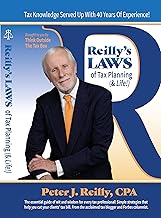Originally published on Passive Activities and Other Oxymorons on May 25th, 2011.
____________________________________________________________________________
Private Letter Ruling 201111002
There are some deal concepts that drive me crazy. One of them is “earn-out”. It seems like if you are still participating in the profits of a business then you really haven’t sold it. I remember a conference I was at where one of the speakers said that sometimes they’ll tell somebody “OK we’ll buy 80% instead of 100% that’s how you will have your earn-out”. One of the problems with an”earn-out” is how you are supposed to recover your basis in an installment sale. This ruling allowed a taxpayer to more quickly recover basis when it became apparent that receipt of the contingent portion of the sales proceeds was unlikely.
LLC’s proposed alternative method of basis recovery to report payments from contingent payment sale, which would result in basis recovery at rate at least twice as fast rate at which basis would be recovered under normal basis recovery rule of Reg § 15a.453-1(c)(3) , represented reasonable basis of method recovery and therefore taxpayer was permitted to use method for sale of assets under asset purchase agreement, which are subject to Code Sec. 453; installment treatment, but only if taxpayer doesn’t receive any contingent payments in either of stated years.
The contingent payments are based on EBITDA, which stands for “earnings before interest, taxes, depreciation and amortization”. Interest, taxes, depreciation and amortization are financial matters independent of the operation of the business. Also in the short run depreciation and amortization are predictable as they are mainly based on the acquisition.
Under the Asset Purchase Agreement, the contingent payments are paid only if Buyer achieves certain consolidated target Earnings Before Interest, Taxes, Deprecation and Amortization (EBITDA) goals. The targets for each earn-out payment are based on EBITDA levels of $p for Year 1, $q for Year 2, and $r for Year 3 (EBITDA target). In any year that the EBITDA target is met, the consideration due to Taxpayer in the following year is $s, plus a% of excess earnings. Excess earnings are defined as the amount of EBITDA achieved by Buyer in an applicable earn-out period in excess of the consolidated EBITDA target. If for any earn-out period, Buyer does not achieve the EBITDA target, then Buyer does not pay any contingent payment the following year.
The deal has not gone as well as expected, or at least hoped due the Event. One of the things that I both hate and love about private letter rulings is the anonymity. I hate it because I always like to know the story behind the story. I love it because I can make guesses about the facts and maybe even make up a story. So here is why they are not making as much money as they hoped:
Taxpayer’s business operations through the date of the asset sale were primarily in the oil and gas services industry. Taxpayer provided pipe coating, fabrication and bending services to the oilfield industry. Since the time of the sale, there was an Event on Date.
Governmental actions related to the Event have affected the principal market of the business that Buyer purchased, and thus, decreased demand for that business’ products. The Event has also resulted in many of Buyer’s customers delaying contracts, as well as Buyer reducing the workforce at the plants it purchased from Taxpayer by b% in Year 2. In addition, demand for products of Taxpayer’s former business has decreased due to increased competition, as well as the decline in the price of crude oil.
So I’m guessing that Event was the Gulf Oil Spill. Don’t you feel bad. You were probably thinking about the birds and the fishies, while “Taxpayer” was suffering a hit on EBITDA. It reminds me of a conference I was at once. There was a drought going on and someone’s comment was that they were worrying about it lousing up the grass on the golf courses.

Taxpayer requests a ruling allowing it to use an alternative method of basis recovery, as provided under § 15a.453-1(c)(7)(ii). Under its alternative method of basis recovery, Taxpayer proposes to allocate the same ratio of basis to each installment payment as that installment payment bears to the estimated amount of aggregate payments to be received by Taxpayer during the four years in which payments could be received. Because Taxpayer does not anticipate receiving any contingent payments, Taxpayer would allocate e% of basis to Year 1 and f% of basis to Year 2.
The ruling was favorable so Taxpayer will recover basis in the same manner as if there were no provision for contingent payments.































































































